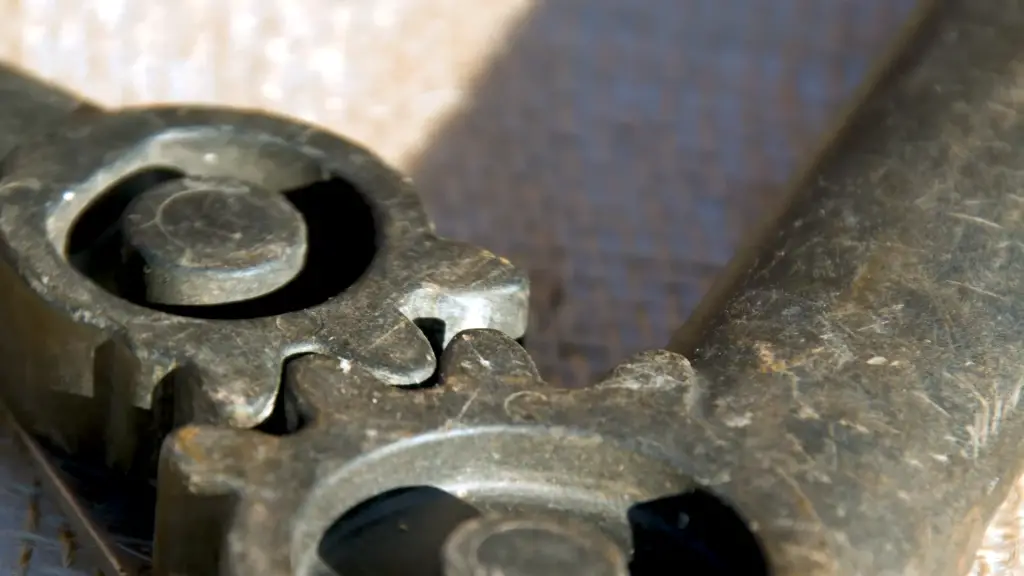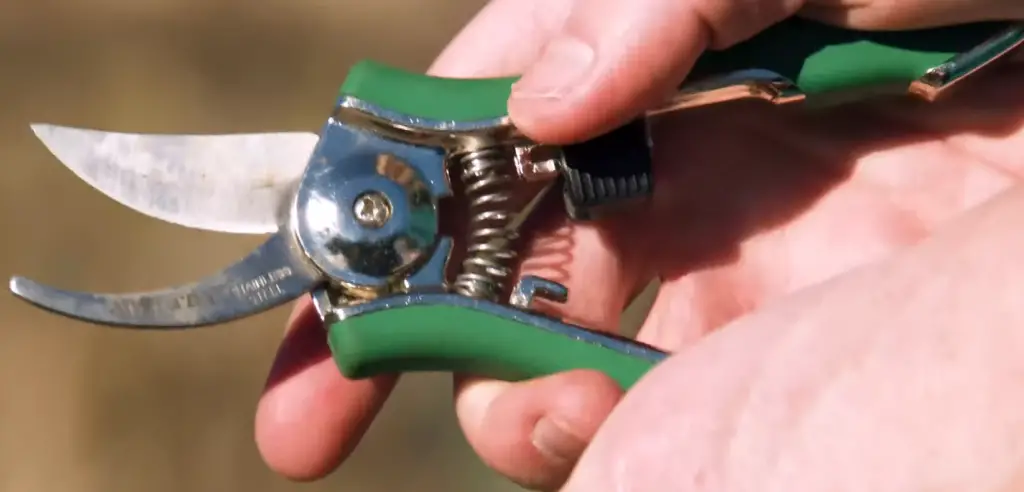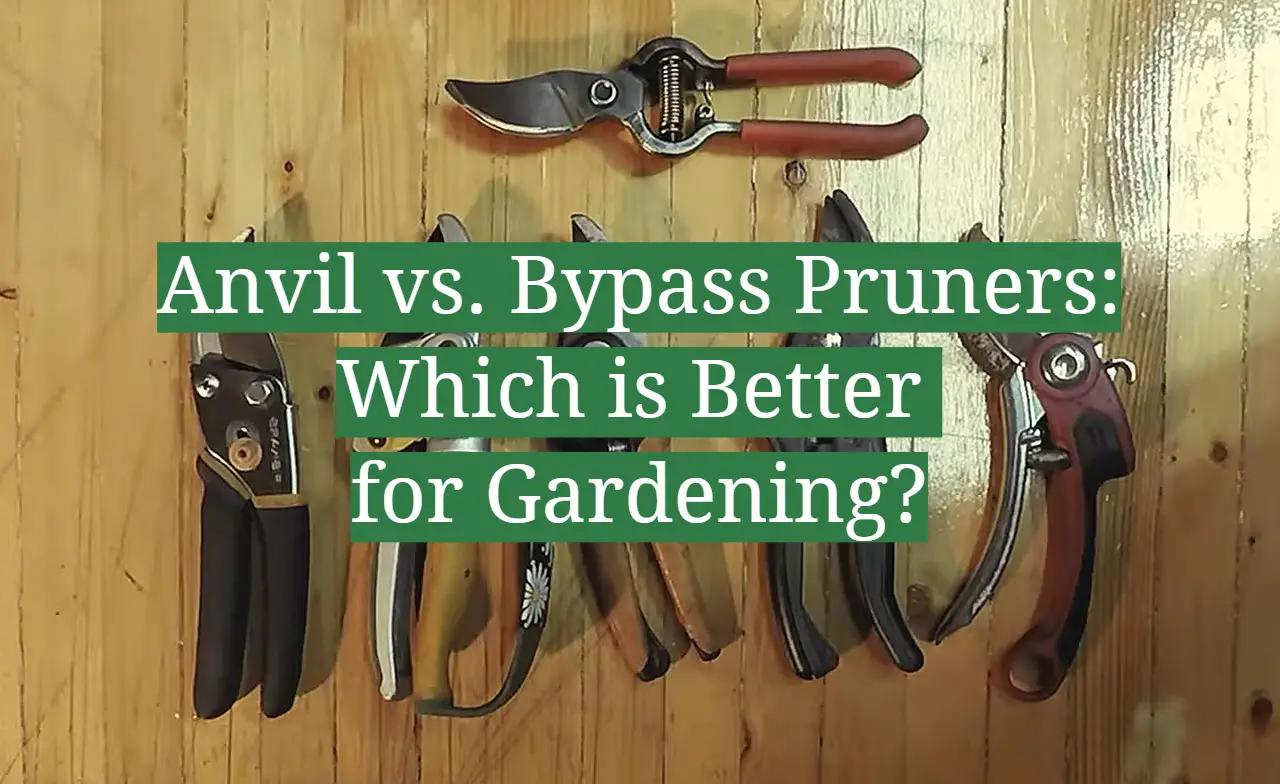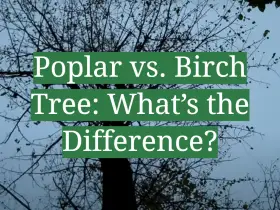If you’re a gardener, then you know that proper pruning is essential for healthy plants. There are many different types of pruners on the market, but which one is right for you? Anvil vs. bypass loppers: which is better for gardening? In this article, we will discuss the pros and cons of each type of lopper and help you decide which one is best for you.
What is an Anvil Pruner?
Anvil pruners feature a single, sharpened blade that is pressed against an anvil when cutting. This type of lopper allows for more precise cuts and helps to reduce the risk of damaging the plant. Anvil pruners are best for hardwood and for making smaller, precise cuts. [1]
What is a Bypass Pruner?
Bypass pruners are a type of lopper that uses two blades that pass by each other, like scissors. This design allows you to make precise cuts with minimal effort. The blade is sharpened on one side and the other side has a curved edge that acts as the anvil, providing support for branches while cutting. Bypass pruners are very versatile and can be used for trimming small branches in tight spaces or larger branches without having to use different-sized tools. [1]

How Do You Use a Bypass Pruner?
How Do You Use an Anvil Pruner?
An anvil pruner is designed to cut through branches up to 1-1/2” in diameter. It works by using a single blade that presses down onto the branch and then cuts it off when enough pressure has been applied. To use an anvil pruner, grip the handles firmly and make sure the blade is facing away from you. Position the branch between the blades so that one side of the branch rests against the anvil on the bottom of the cutting head. Squeeze both handles together until you feel them click and hold tightly together, which will lock them in place. Then pull back on both handles until you hear a snap or feel resistance, and your branch should now be cleanly cut off from the rest of the plant. [1]
A closer look at anvil pruners
Anvil pruners are a popular tool among gardeners. They feature two sharp blades that come together like scissors, with one blade closing on top of the other. The bottom blade rests against an anvil, which can be made of various materials such as metal or plastic.
Therefore, it’s important for gardeners to understand when and how to use anvil pruners correctly in order to avoid damaging delicate plants. [2]
A closer look at bypass pruners
When it comes to gardening, bypass pruners are a popular choice for cutting clean through shoots and stems. The blades of these pruners overlap slightly when shut, allowing them to cut stems in two directions without crushing them. This type of pruning is ideal for preventing damage to delicate plants and young growth.
Bypass pruners also feature a curved blade edge that can be pushed into the stem from either the top or bottom. This offers greater accuracy when making precise cuts close to buds or leaves, as well as reducing the risk of accidentally damaging healthy tissue in the process. [2]
Nature of Use
Anvil pruners are designed to work with branches of a certain size and thickness. They are well suited for larger stems, such as those found in apple trees or rose bushes, while bypass pruners are best suited for thinner, more delicate stems like those on grape vines or small seedlings. Anvil pruners can cut through thicker material using the crushing force exerted by the anvil blade onto the cutting blade. Bypass pruners use leverage to create a scissor-like action to make clean cuts without crushing or damaging the plant material. [1]
Degree of Use
No matter which type of pruner you choose, they both have their advantages and disadvantages. Anvil pruners offer a more precise cut because the blade slices through the material in a single movement. This makes them better for light-duty applications such as trimming small branches or cutting flowers. On the other hand, bypass pruners can provide a cleaner cut on thicker branches and limbs due to their two-toothed cutting system that grips the material before slicing it off. Both types of pruners are useful for different tasks and can help make your gardening experience easier and more enjoyable. [1]
Type of Blade
When it comes to anvil vs. bypass pruners, the type of blade used is a major factor in determining which is better for gardening.
Weight
When it comes to gardening, every ounce counts. Loppers are no exception — especially for those who spend long hours in the garden and need tools that don’t wear them out. Anvil pruners tend to be heavier than bypass pruners of similar quality because they have more internal components. In general, anvil loppers will weigh about twice as much as a bypass model with comparable features and construction. If you’re looking for a lightweight tool that won’t slow you down or put too much strain on your hands and arms, then bypass pruners may be best for you. [1]
Cost
The cost of the anvil and bypass pruners can vary widely. On the one hand, anvil pruners tend to be cheaper due to their simpler design. However, some models of bypass pruners have more features or higher-quality materials that make them more expensive. Depending on your budget and needs, you may want to consider either type of pruner. [1]

Depth of Cut
One of the main differences between anvil pruners and bypass pruners is the depth of cut that each one provides. Anvils are able to cut through thicker branches due to their blade design, whereas bypass pruners have a more shallow cutting capacity. This means that when it comes time to trim back large shrubs or trees, anvils may be the better choice since they can handle larger cuts without becoming dull or damaged. [1]
Mechanism of Operation
Anvil pruners have a single blade that cuts against an anvil, which is like a flat metal surface. The blade presses down on the branch and slices through it as it does so. Bypass pruners also have one blade, but this one has curved edges that pass by each other like scissors. The blades slide past each other to make the cut, rather than pressing against something else.
Degree of Damage to Branch
Anvil pruners tend to cause more damage to branches when cutting than bypass pruners do. Anvil blades mash the branch as they close, leaving a ragged cut with torn wood fibers that are vulnerable to disease and insect infestation. Since bypass blades slide past each other, the cut is much cleaner and less traumatic for the plant.
However, if your garden needs large-scale pruning of thick branches, anvil pruners can be helpful in making quick work of the job. The rough cut will heal faster than you may think; just make sure to clean and disinfect your tool after each use, especially when switching between plants or branches of different sizes. [1]
Best for Which Branches
When it comes to pruning larger branches, anvil pruners are the best choice. This is because they easily cut through thicker and harder branches. The blade smashes against the anvil when cutting with a large amount of force, which helps them break through any tough material quickly and cleanly.
Bypass pruners are better for smaller branches, as they only use a small amount of force to cut. Since they don’t smash against anything while cutting, they can make precise and clean cuts without damaging delicate stems or leaves surrounding the branch being trimmed. [1]
When should I use anvil pruners?
Anvil pruners are excellent for making quick and clean cuts on hard, dead, or damaged branches. They are also great for larger, tougher stems such as those from fruit trees since the anvil serves to hold the branch in place while you make the cut.
However, anvil pruners can crush or damage woody stems when used incorrectly. Therefore, it’s important to use an appropriate amount of force when using them and be careful not to squeeze too much. Additionally, they should not be used on live green branches as they may cause more serious damage due to their crushing action. [2]

When should I use bypass pruners?
Bypass pruners are great for precise and fine-tuning cuts. That’s why they make a great choice for flowers and thin branches. The clean cut of bypass pruners also makes them ideal for cutting fruits and vegetables like grapes, tomatoes, or cucumbers.
Because the blades pass by each other in a scissor-like motion, bypass pruners provide a better cut than if you were to use anvil ones that crush the material instead of slicing it. These types of pruners can also reach into tight spaces where anvil models cannot fit as easily. [2]
FAQ
What are anvil pruners good for?
Anvil pruners are good for cutting dry, dead wood because they work on a simple chopping motion. This makes them great for precisely slicing branches and hedges that don’t require much maintenance.
Which type of pruning shears is preferred for growing branches?
Bypass pruners are preferred for growing branches because they can cut with a scissoring motion and make a cleaner, smooth cut. This prevents the branch from splitting or tearing, which is important for healthy growth. Bypass pruners also allow you to trim away small twigs without damaging the main stem or trunk.
What is the best pruning tool?
That depends on the job you are doing. If you need to prune dead wood or trim small twigs, anvil pruners may be your best option. However, if you’re looking for a clean cut that won’t damage new growth, then bypass pruners are a better choice.
What is the most versatile gardening tool?
Anvil pruners and bypass pruners each have their own unique benefits, which makes them both great tools for gardening. Anvil pruners are ideal for dry wood while bypass pruners make quick work of green stems. When it comes to versatility, a combination of the two can be the best option as they provide you with the ability to prune both dry and green stems.
What is the most useful garden tool?
The most useful garden tool is the one that best suits your gardening needs. If you need to prune both dry and green stems, then a combination of the anvil and bypass pruners would be the most helpful. However, if you only have one type of job, then either anvil or bypass pruners can do the job. Consider the type of task you need to do before investing in a pruner so that you can get the most out of your gardening tool.

What is the best tool to use in digging holes for planting?
The best tool for digging holes for planting is a shovel or spade. Shovels and spades are great for moving soil and creating the hole you need to plant your plants or bulbs. They come in different sizes depending on the type of job you need to do, so make sure to choose one that best fits the task at hand.
What tool does every gardener need?
Every gardener needs a pair of pruners. Pruners help to keep your garden looking neat and trim by allowing you to maintain its shape with precision. Anvil and bypass pruners both have their own unique benefits, so make sure to choose the one that best fits your needs.
What’s the best tool to dig dirt?
The best tool to dig dirt is a shovel or spade. Shovels and spades come in different sizes, so make sure to choose one that’s right for the job you have at hand. They are great for moving soil and creating holes for planting bulbs or other plants in your garden.
Useful Video: Bypass vs Anvil Pruners
Conclusion
When it comes to pruning, both anvil and bypass pruners have their advantages and disadvantages. In general, anvil pruners work better for larger branches while bypass pruners are ideal for lighter, smaller branches. Ultimately, the decision is yours- consider your gardening needs before investing in a pair of loppers! Be sure to look for a quality pair with sharp blades and comfortable grips. With the right tools, you’ll be pruning like a pro in no time!
References:
- https://www.plantician.com/anvil-pruner-vs-bypass-pruner/
- https://davaon.com/blogs/articles/anvil-or-bypass-your-guide-to-choosing-the-right-pruner










Leave a Reply
View Comments